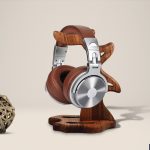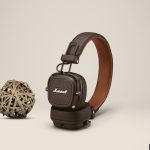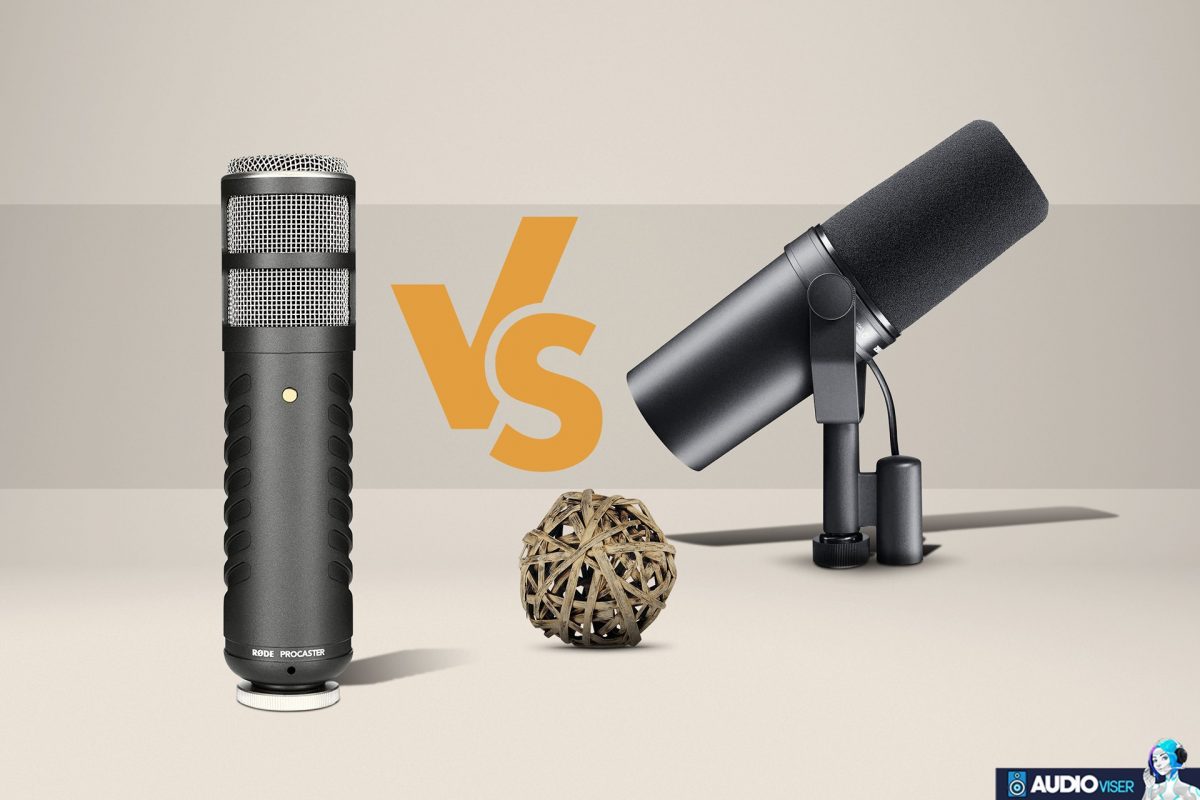
As some may know, microphones are significant devices many people use, and you can find a plethora of them in the market competing with each other. However, here I am at another comparison article, trying to set the line between Shure SM7B vs Procaster from the brand Rode.
I will go into detail about the main things regarding these two microphones so that you can notice what the differences are and the similarities that these two might have! Let’s start the battle!
Key Takeaways
- Shure SM7B and Procaster are two unique microphones used by many people.
- Regarding the type, both of these microphones are dynamic ones, and they own the same polar pattern.
- Background noise doesn’t have the most little place in these two microphones.
- The frequency ranges of Shure SM7B and Procaster are the leading and most important differences.
- If your concern stands on their price tag, you should know that Rode Procaster is more affordable.
Shure SM7B Vs. Procaster: How Do They Differ?
Shure SM7B
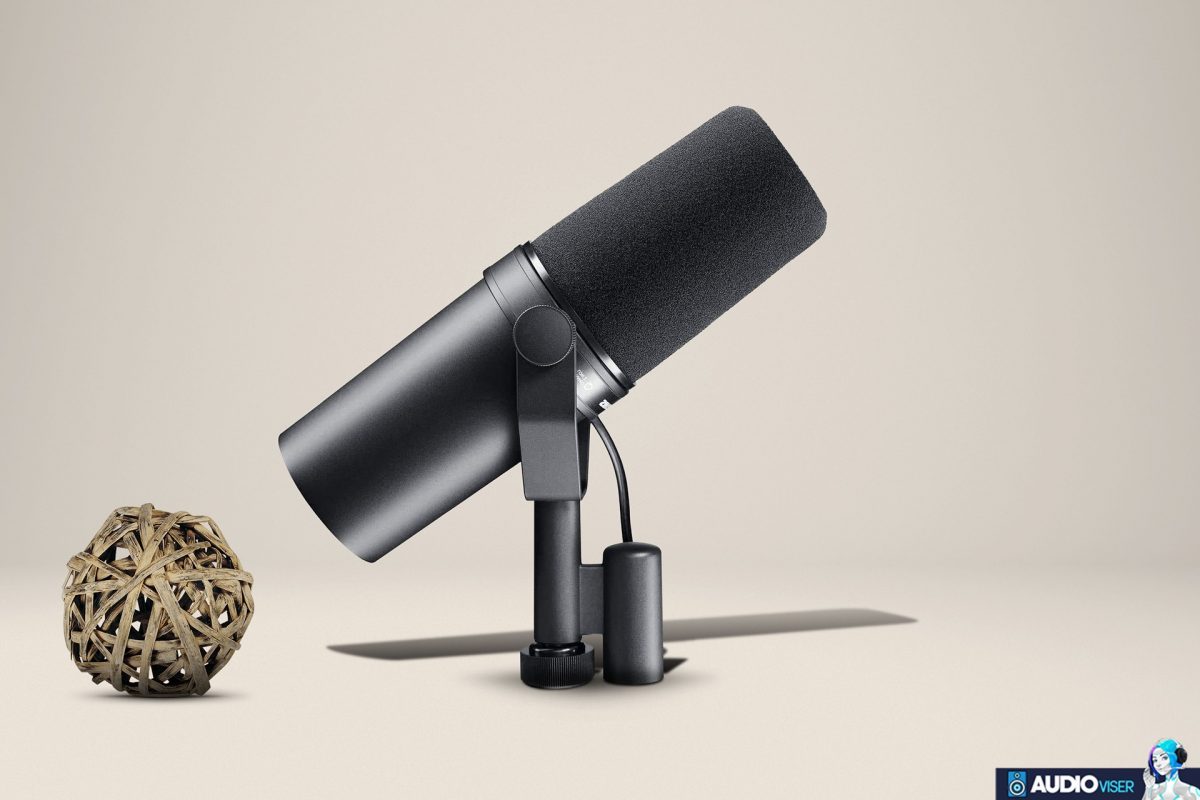
Specifications and characteristics of Shure SM7B:
- Polar pattern: Cardioid
- Frequency range: 50 – 20,000 Hz
- Sensitivity -59.0 dB (1.12 mV)
- Bass roll-off switch
- Mid-boost switch
- Impedance: 150 ohms
- Shielding against electromagnetic interference
- Swivel mount
- Zero Latency Headphone Jack
- XLR connector
- Dimensions: 190 x 64 x 96 mm
- Weight: 766 g
- Includes switch cover plate and windscreen
Rode Procaster
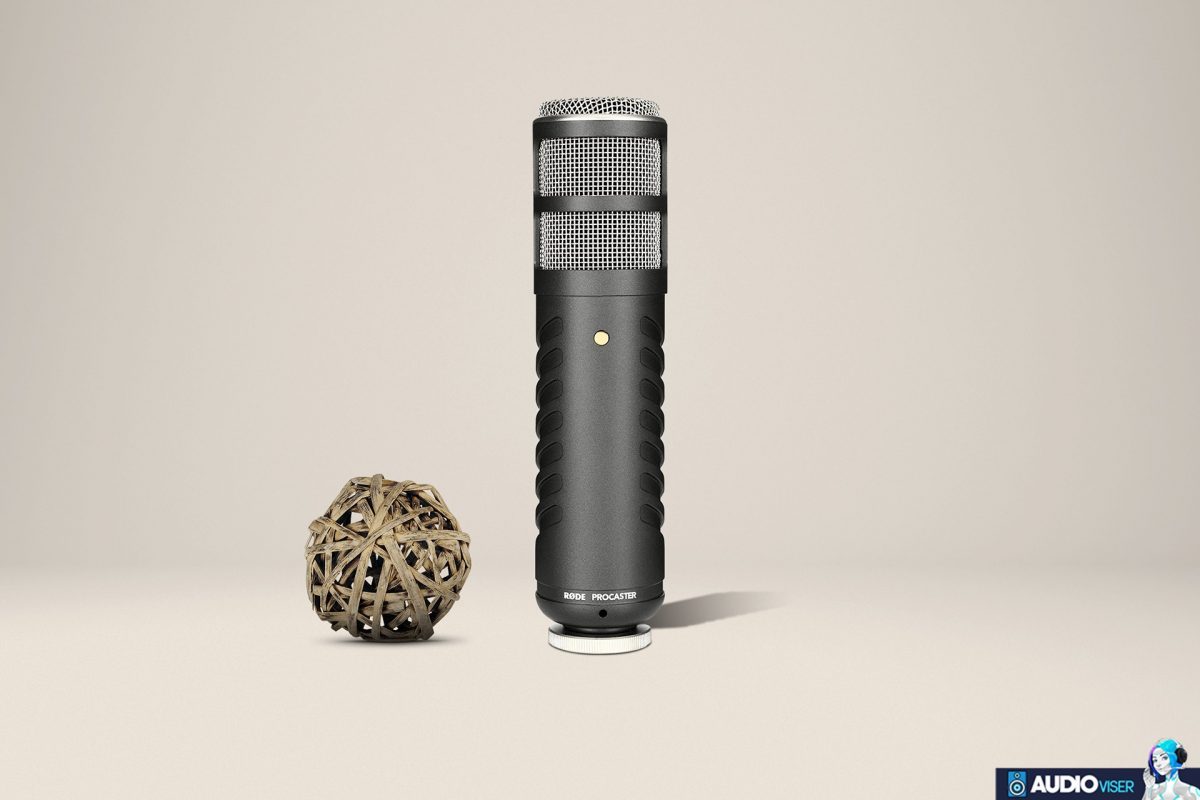
Specifications and characteristics of Rode Procaster:
- Use: For radio and dubbing studios as well as for professional podcasting
- Build: Internal pop filter and insensitivity to HF- and other electromagnetic interference
- Diaphragm: Neodymium large-diaphragm capsule
- Polar pattern: Cardioid
- Frequency range: 75 – 18.000 Hz
- Output impedance: 32 Ohm
- Sensitivity -56.0 dB re 1 V/Pascal (1.60 mV @ 94 dB SPL) +/- 2 dB @ 1 kHz
- Length: 214 mm
- Diameter: 53 mm
- Weight: 695 g
Type and Use
The primary specification you should know about these two great microphones is the type and for what you can use them primarily. Well, there is no difference between these two microphones regarding this part.
Shure SM7B and Rode Procaster are dynamic microphones that convert sound/voice to electrical signals with the help of electromagnetism.
As for the usage part, you can use the Shure SM7B microphone for broadcasting, podcasts, and while recording in a studio. Meanwhile, the Rode Procaster microphone is a microphone that stands for professional use in studios, and interestingly enough, you can also use it with instruments.
If you are concerned about how you will use them, you don’t have to worry because they are super easy to use and won’t give you a hard time on anything.
Physical Differences
Nothing says physical in microphones more than design and build quality, and you should know the differences between these two microphones.
If you are a fan of looks, you will be thrilled by the design of Shure SM7B, and you will notice how cool it comes covered in all black color. The windscreen is easy to put or remove and maintain regarding cleaning. The material used in the Shure SM7B microphone is aluminum and stainless steel, a durable microphone that you can use for a long time.
On the other hand, the Procaster microphone includes metal on its build and is a bit sturdier regarding the construction part. As for the design, Rode Procaster isn’t the best-looking microphone, especially when compared to Shure SM7B, but still, it has a unique look, again covered in black color. Procaster lacks a windscreen but owns a strong grille covering the microphone’s top part.
Connection
The connectivity is essential to check, and here we have both of these microphones, Shure SM7B and Rode Procaster, completely wired.
The primary connection they use is via an XLR cable, one of the most used types of wires/cables on most microphones. In both of them, you will find the XLR cable with 3-pins.
Picking Up the Voice
Everybody should have the main thing in mind when buying microphones how they pick up the voices or the sound; more precisely, you should check the polar pattern.
These two microphones, Shure SM7B and Rode Procaster, both have a cardioid polar pattern and pick up your voice in only one direction. Based on the polar pattern, you will also know how to place the microphones in use.
Dealing With Noises
Now that you know how they pick up the voice, I want to mention the background noise. Shure SM7B and Rode Procaster are microphones that work amazingly on dealing with the background noise that may come when you use them.
Shure SM7B owns Air Suspension Shock Isolation and Pop Filter that deals with mechanical noise and breathiness; meanwhile, Rode Procaster deals with noise while using its internal shock mounting and the pop filter.
Performance Differences
Here we came to the most crucial part and battle: how they will deliver your voice to the audience and how they sound regarding different things.
The first difference in the performance part is the frequency response. On Shure SM7B, you will find a 50Hz to 20kHz frequency response; on Rode Procaster, the frequency range stands from 75Hz to 18kHz. Based on these two specifications, you will bring out better low and high sound frequencies from Shure SM7B than from Rode Procaster.
After all, the performance and frequency range will help you distinguish better between Shure SM7B and Rode Procaster. However, if you need a general overview of the sound, I want to mention that the Shure SM7B microphone is one of the microphones that brings out a super smooth and clear voice.
Price Range
Another super vital thing that everybody thinks about when comparing two microphones is the price range they come.
Shure SM7B and Rode Procaster aren’t the most low-priced microphones. Yes, they are known as high-end microphones that you can use. However, you will find Rode at a lower price, so if your concern is about the price tag, it seems Rode is your winner.
Final Words
For some reason, since I’ve been writing about microphones mainly, I find it hard to come to a conclusion, especially if it is a comparison article between dynamic mics. So, I’m sorry, but again the verdict is in your hands, and you will have to make your own decision.
I just can promise you that you can totally rely on the above-mentioned things when thinking to make a purchase, because I have mentioned some accurate information that would come in handy, and I’m pretty sure about it. Enjoy!
Further Reading
You can read comparison blogs for Shure, like the Shure SM7B vs. Hyperx Quadcast and the Shure SM7B vs. AKG C214. It goes on and on, pitting SM7B against At4040, etc.
There’s also a post titled Do headphones attract lighting and a list of the top studio monitors for guitar.
Not only that, but I compile a list of Edifier Bookshelf Speakers as well.
Mix & Mastering
I love to get my hands on all sorts of audio equipment, from headphones and speakers to audio interfaces. I love putting these products through their paces and seeing what they can do.





